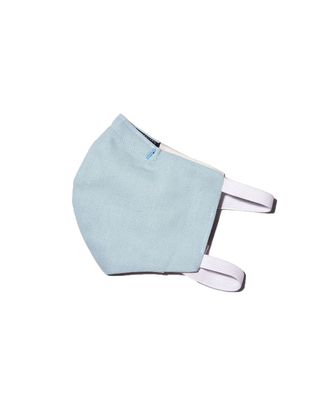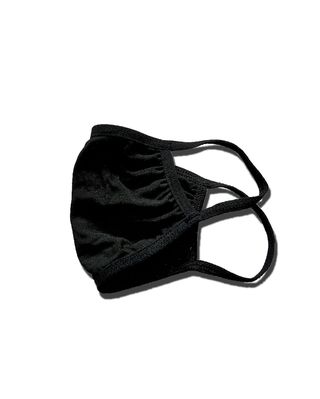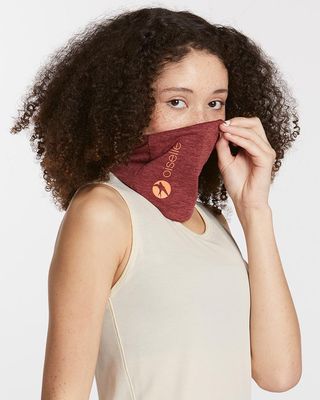Researchers tested 14 different masks, but the study wasn’t exactly set up to test the effectiveness of all mask types.
- A recent study done by researchers at Duke University found that of commonly used masks, three-layer surgical masks, or similar homemade cotton masks were effective at reducing the transmission of droplets during regular speech.
- The study was meant as a demonstration of the technique for testing mask effectiveness, not as a systematic study of all mask types, study author Martin Fischer, Ph.D., associate research professor in the Department of Chemistry at Duke explained during a media event on August 13, 2020.
- New research from the University of Georgia used a version of the Duke experiment to test the effectiveness of gaiters and found that neck gaiters can provide a level of protection equivalent to masks when used as a face-covering.
- Wearing a cloth face covering is recommended by experts as one way to mitigate the spread of the coronavirus, but it is not a substitute for regular hand washing, physical distancing, or remaining at home when ill. Check your local government recommendations for guidance. (You can find a directory of state health departments here.)
This is a rapidly developing situation. For the most up-to-date information, check resources like the Centers for Disease Control and Prevention (CDC) regularly. This story will be updated as new information becomes available.
Wearing a mask in public, especially when social distancing is not feasible, is one of the main ways people can help slow the spread of coronavirus. But are certain masks better than others?
A recent study done by researchers at Duke University tested 14 commonly used face coverings such as three-layer surgical masks, different versions of homemade cotton masks, bandanas, and gaiter-type neck fleeces for their efficacy at slowing the spread of respiratory droplets. Researchers used a simple test to determine how well each mask worked, repeating the trial 10 times, measuring droplets spread by one wearer during normal speech, with the wearer speaking into the direction of an expanded laser beam inside a dark enclosure. Then, a computer algorithm was used to count the droplets in the video.
However, this study was meant as a demonstration of the technique for testing mask effectiveness, not as a systematic study of all mask types, study author Martin Fischer, Ph.D., associate research professor in the Department of Chemistry at Duke explained during a media event on August 13.
And that’s important to remember—the study performed by Duke researchers was designed to evaluate a simple method to test how well masks worked, said Brian Labus, Ph.D., MPH, assistant professor in the School of Public Health at the University of Nevada Las Vegas. “People have really gone overboard with their interpretation of this study. The goal of the study was not actually to evaluate masks,” Labus says.
As part of that evaluation, they conducted a rough test of a few masks, and now that they have a method that works, they can move on to rigorous testing of different masks.
Which is what researchers at the University of Georgia recently did. They used a version of the testing method performed in the first study out of Duke University to test the effectiveness of gaiters at slowing droplet spread. Researchers compared the effectiveness of gaiters against no mask at all as well as a variety of two-layer, washable, breathable cloth masks. The results showed that single-layer gaiters provided a 77-percent average reduction in respiratory droplets compared to wearing no face covering at all and multi-layer gaiters provided a 96-percent average reduction in respiratory droplets compared to wearing no face covering at all. Additionally, researchers observed that two-layer masks provided an 81-percent average reduction in respiratory droplets compared to wearing no face covering at all.
It’s important to note, this is not a peer reviewed or published study yet, but researchers plan to have the study peer reviewed and published within the next six weeks, a public relations spokesperson confirmed to Runner’s World. Due to the nature of COVID, researchers have been trying to get pertinent information out to the public as soon as possible.

When wearing a mask, you should make sure it is well-fitted and covers your mouth and nose. Both the Association of American Medical Colleges (AAMC) and the Centers for Disease Control have helpful guidelines about how to properly wear masks. The AAMC suggests that cloth masks should have at least two layers whenever possible.
While it’s not surprising that some masks performed better than others, there needs to be much more rigorous testing before any recommendations can be given on which types of masks to wear, and which to avoid, Labus said. This is why additional research, like the latest test from the University of Georgia is being conducted.
At this point, masks are mandated in many parts of the country because of their effectiveness.
Matt Ferrari Ph.D., associate professor of biology in the Eberly College of Science, and a researcher with the Center for Infectious Disease Dynamics at Penn State puts it simply: “Stick with the tried and true advice. Stay apart. Stay outside. Wear a multi-ply mask if you can. Wear anything in a pinch.”






Recent Comments